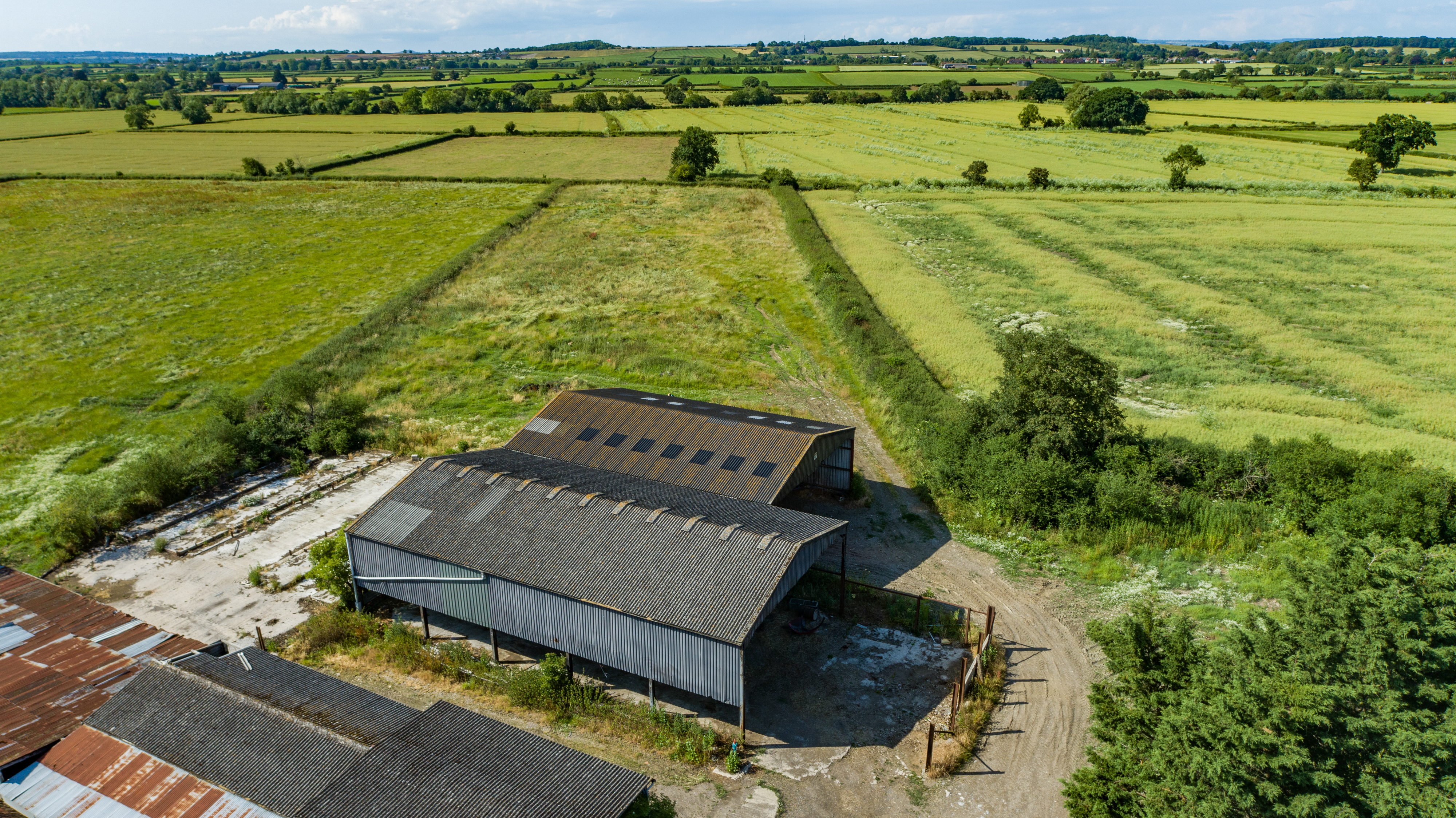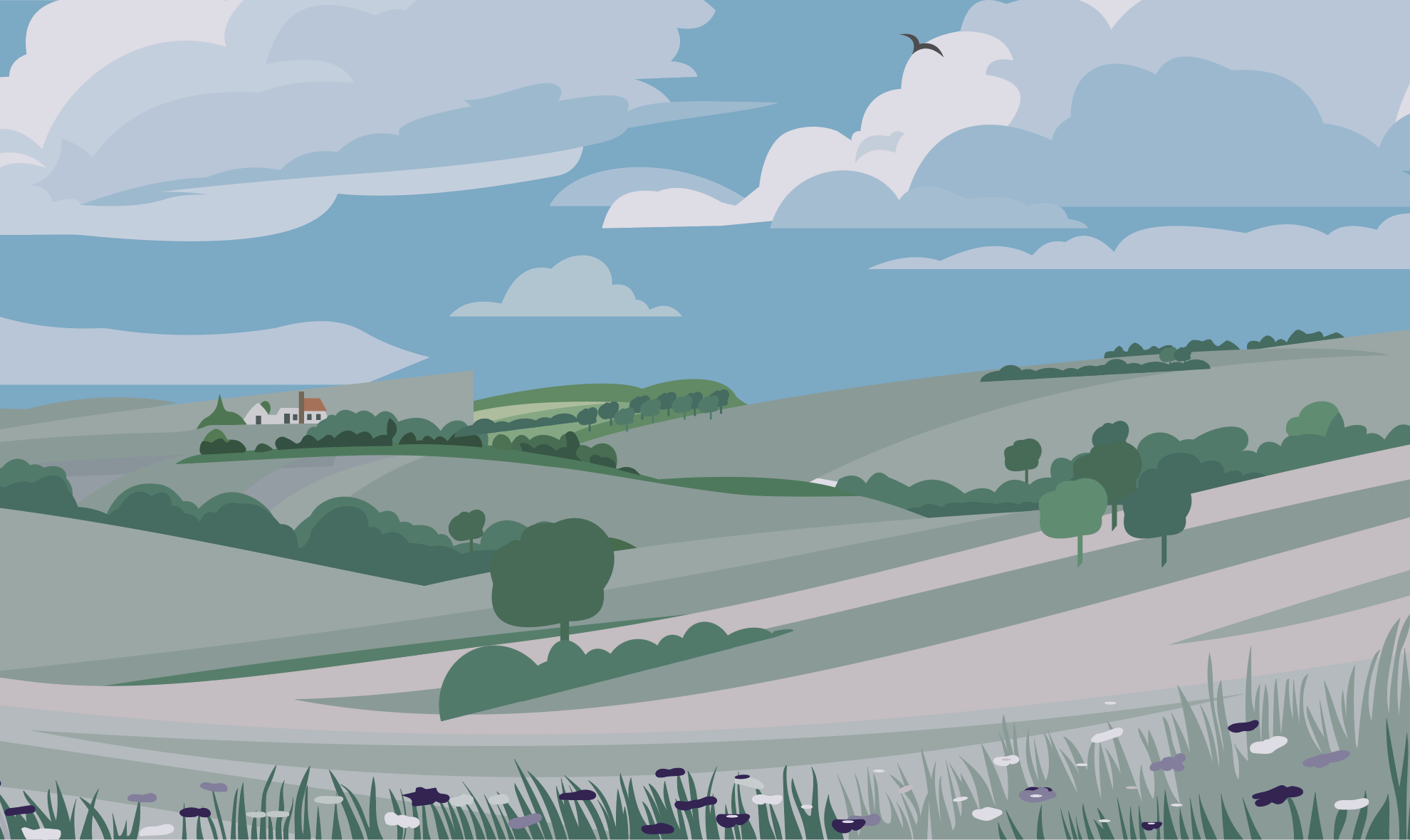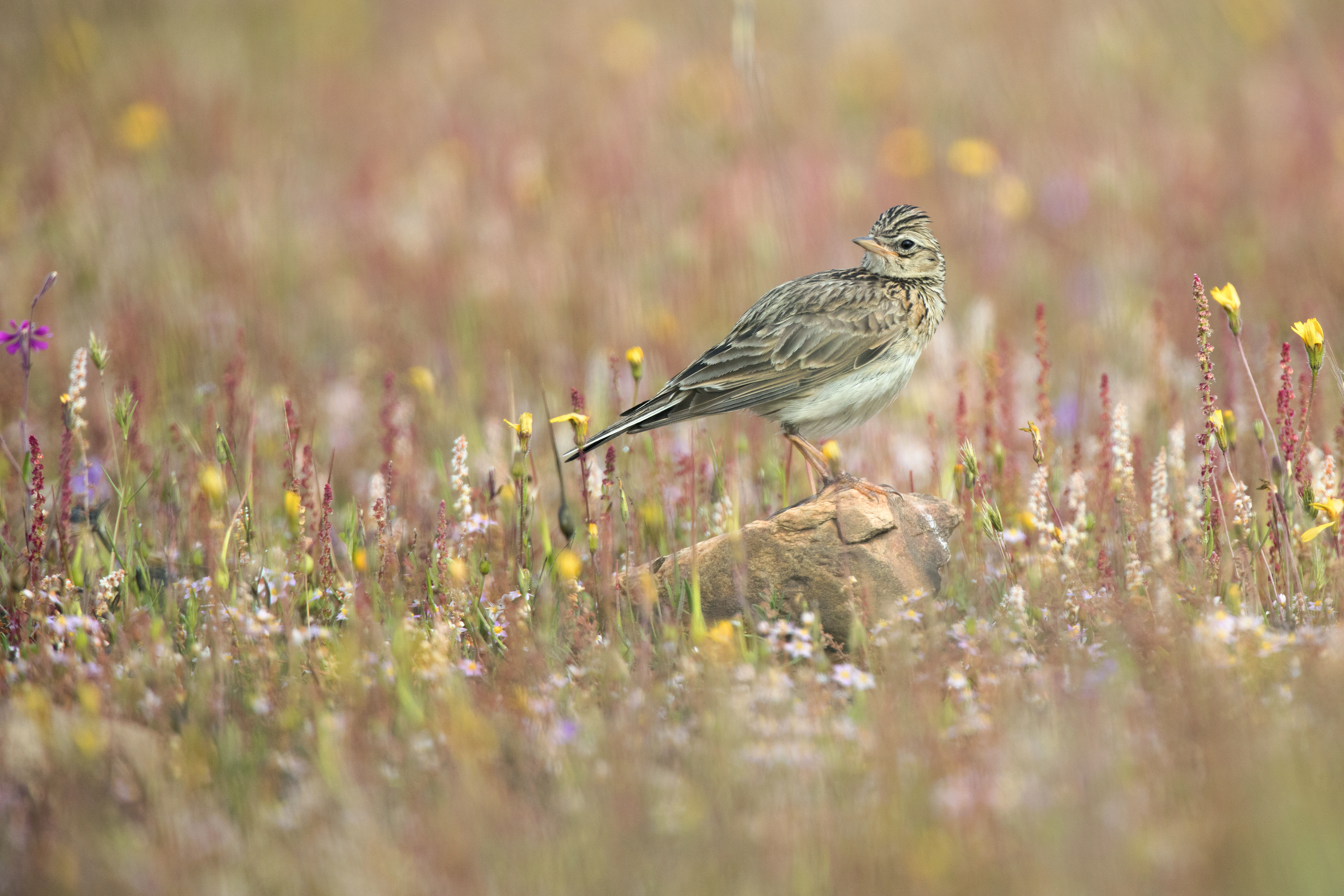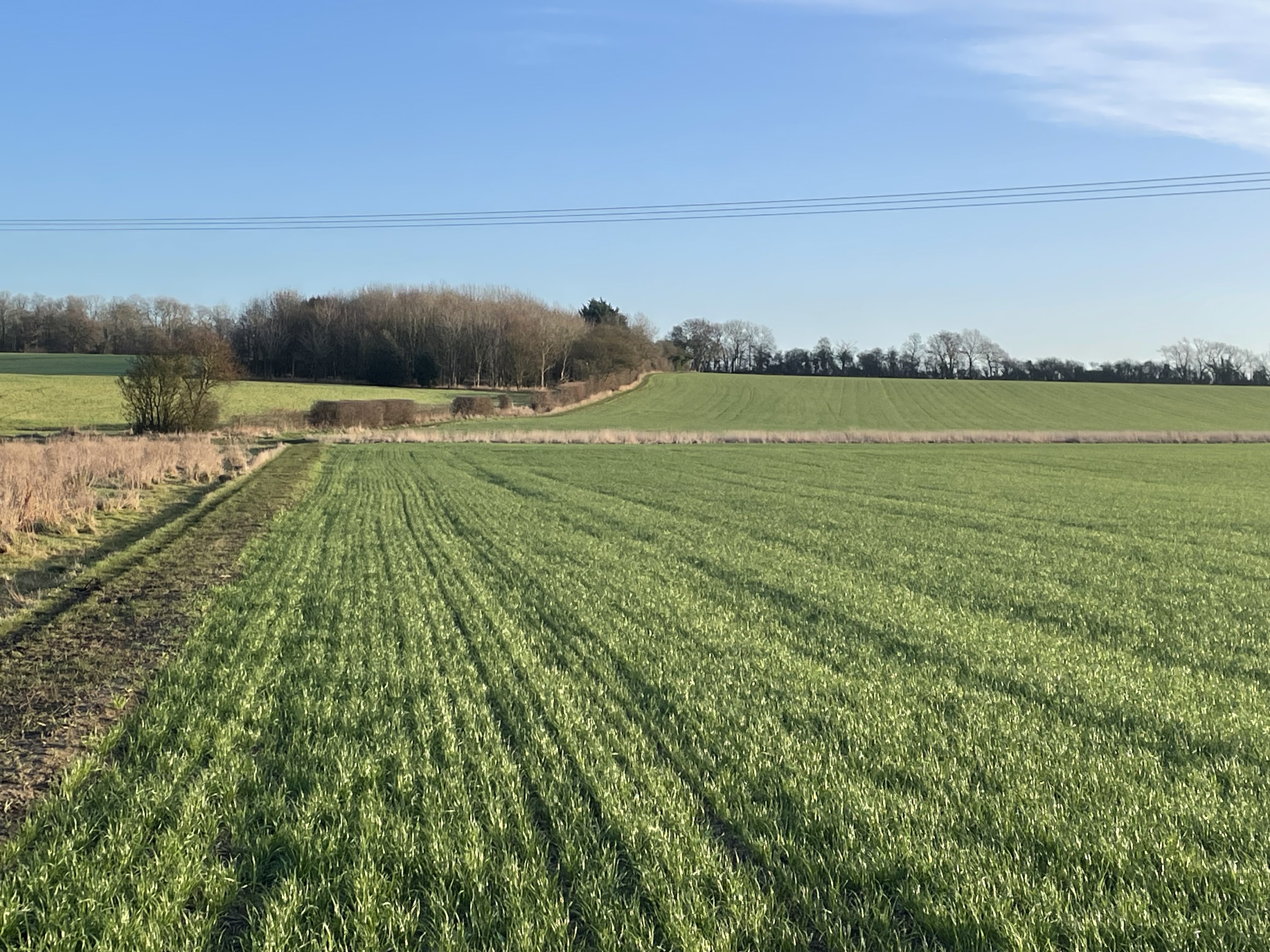
Experts believe biodiversity net gain is the biggest change to planning legislation in our lifetime – what does is mean
for landowners?
From 12 February, biodiversity net gain (BNG) requirements became mandatory. Designed to ensure habitats are left in a better state than they were pre-development, the legislation has created an England-wide, regulated marketplace for biodiversity offsetting.
“In simple terms, BNG means the government can use planning legislation to help the environment and offset some of the damage that has already been done,” says Mark Russell, Partner at Carter Jonas. “The system has moved from developers needing to offset the biodiversity damage that a development was causing, to needing to offset that damage plus 10% extra.”
If developers cannot provide this extra 10% on site, they will need to purchase BNG ‘units’ off site, which is where the opportunity exists
for landowners.
A new era for biodiversity

Sign up to receive content like this directly to your inbox
Units
“It is almost impossible to measure biodiversity correctly,” says David Alborough, Natural Capital expert for Carter Jonas. “For example, if you count butterflies one year, and then the next, there are so many other variables at play, you can’t get a meaningful result by comparing them.
Although Mr Russell and Mr Alborough believe BNG will create significant opportunities for landowners, they advise a note of caution and due diligence before embarking upon such a scheme.
“The landowner will promise to create a certain level of diversity improvement over the next 30 years,” explains Mr Russell.
The landowner’s role
Most of the information used to calculate a unit is fixed, although the landowner will need to define the land parcels and provide a baseline condition score, which will require some ecological knowledge or
external help.
“Units come in lots of different varieties because of their physical type, for example whether they are defined as landscape, hedgerow, water and coastal,” says Mr Russell. “And then within those categories there are different types depending on the ‘distinctiveness’ that’s being created. If you plan to go from standard grassland to one step up from that, it probably only has moderate distinctiveness, whereas if you’re proposing to cultivate it into a high-quality grassland environment that will have a higher distinctiveness and a different definition within the metric.”
There are clear rules to ensure levels of ‘distinctiveness’ are maintained.
“It’s the equivalent of a landowner doing a deal with Weetabix to deliver a tonne of wheat at a certain quality on a certain date every year for the next 30 years and taking all that payment on day one. You don’t know how much the seed or labour will cost each year, or what the weather will be like.”
“You will be paid for your 30 years of wheat on day one, so you need to think about what you’re going to do with that money – where will you put it?” adds Mr Alborough. “It needs to pay for the scheme and deliver a profit, at some stage. Where you put that money and what you do with it is probably as important as what you’re doing on the ground.
“It’s also for a specific piece of land – if your wheat for Weetabix did badly in a field one year, you could move it to another field and that wouldn’t be a problem. You can’t do that with BNG – the piece of land is fixed.”
Before committing to the scheme for 30 years, Mark and David advise looking at how BNG would fit into a business’ wider strategic plan.
“The first step is to look at the holding, the business and its objectives and what the landowner wants to get out of the holding for the next 30-60 years,” says Mr Russell. “BNG can be a great part of that strategy, but it needs to be part of a holistic plan that considers the entire business.”
“Assuming that everything still points favourably towards doing BNG, we then look at the landscape today, what could be done to produce more biodiversity units and then decide on the level of change that is acceptable to the landowner in terms of management and what it will ultimately look like at the end of the 30-year period.
“This process involves us and potentially the landowner’s accountant, solicitor and an ecologist.
Changing land use in order to boost environmental credentials on farm is not a new concept.
“The question I’ve been asked a lot is: “I’ve been in an environmental scheme, so have I lost out on the opportunity to do BNG?” says Mr Russell.
“The answer is no. The environmental scheme will have changed your baseline, and in some situations, may have reduced the number of units you can create. However, we have already seen examples where work that’s already been done has led to the opportunity to create more units of higher distinctiveness and therefore of more value than would’ve been the case had the environmental scheme not been in place.”
Opportunities
“We think the next stage is one where corporate funds will really get going with ESG (Environmental, Social and Governance) units and we think they will come into the market because landowners will have proved they can make the change and handle the finances. These will be something like BNG+, containing a measurement of biodiversity change, carbon change and nutrient change too for that completely free market.”
BNG also has the potential to help drive diversification businesses.
“BNG units work it out in a way that people can understand and that is consistent.”
“They are contracted to deliver that change; the deal isn’t done once the units are sold. They then have a responsibility and a requirement to keep proving they are making and maintaining that change and ensuring that biodiversity continues to grow for the next 30 years.”
“Some people are approaching BNG as a driver of other forms of income potential, they’re carving out some areas from their holding to change to BNG, but retaining them for leisure uses, for example, for holiday lets."

Mark Russell




“Developers can only trade up – they can’t cut down woodland then buy grassland to replace it,” Mr Russell adds. “The units they purchase need to have the same level of distinctiveness or better.
“You also can’t destroy high-distinctiveness grassland and replace it with a greater quantity of low-distinctiveness grassland units.”
“Within that process we would also look at the local/regional potential needs, because there is no point creating something that no one wants to buy,” Mr Alborough adds.

There is also the potential to pursue further opportunities on top of the
BNG units.
“A bundled credit is where you sell your habitat change to someone and they get lots of things within that price,” explains Mr Alborough. “For example, if you have some peatland that you restore with the carbon code and sell a carbon credit from that restoration - they are buying within that price, the increase in water retention and the biodiversity improvements all bundled together. It’s important to ensure the price reflects that.“
At present it is also possible to stack nitrate credits and BNG credits for the same piece of land. “These are the only two you can stack at the moment, but this is evolving and talks are taking place about stacking other credits,” shares Mr Alborough.
“Again, strategically planning around what might be driven from that piece of land is key, as you could be creating a business that people might pay to go
and see.”
There are also a range of options for how to engage with the BNG marketplace according to the level of risk and reward a landowner is comfortable with.
“By creating your own habitat bank and selling the BNG units you would have all the risk but all the reward,” Mr Russell says. “At the other end of the spectrum, you could rent the land to a third party – you would take a relatively small share of the income, but it would be very low risk.
“The latter isn’t an unusual approach for farmers and landowners; we’ve seen it previously with renewables and leisure enterprises. Land is rented to a third party in a new marketplace – if they see it working well, they may go into it themselves later as a second bite of the cherry.”
Seeking expert guidance is recommended when navigating a new marketplace, particularly when certain elements are still under consideration.
“At present, we don’t have a lot of certainty on the tax position of BNG units as we’re waiting for the Treasury to respond to a consultation from last year,” says Mr Russell.
However, Carter Jonas is ready to guide landowners through the process.
“We can act as project managers, which covers the initial stages, the implementation and the ongoing management of sites,” Mr Russell adds.
Carter Jonas’ role

“At the point of having created the units, we
can market them.”
“We’re offering BNG units and ESG projects. A developer might want to purchase 10 BNG units to offset their development, but a corporate might prefer to purchase 10 acres of change.”
For the right business, BNG presents a new and exciting opportunity.
“Farms are used to handling a reasonable amount of risk in an average year,” says Mr Russell. “It’s very difficult to predict in a farming budget whether you will make a profit because you don’t know how much seeds will cost, what the weather will do or what price you will get.
“For the same parcel of land in BNG, you may not know all the costs, or the weather, but you do know the price you are accepting for it. It is possible to do a budget that shows you will be able to make a profit from it over the
30-year period.”
“Once you get your head around BNG, it’s probably not as risky as the business you are currently managing,” adds Mr Alborough. “You won’t be at the beck and call of the supermarkets, and you won’t be as affected by oil or input prices.
“With BNG you could be entering a more stable way of operating – it’s management of land for a particular purpose, which is what you’ve been doing all along anyway.
“The financing is the same as the solar farm deal you did five years ago; the contractual arrangement is the same as the land option deal your grandfather signed for 40 years for a piece of land on the edge of the village. It’s all the same but with different terminology.”

Case study

Devana forms the latest example of Ground Control’s long-standing commitment to building a network for nature recovery through direct action.
The Centre will be Ground Control’s second site, adding to its 296-acre Wildfell Centre for Environmental Recovery in Braintree, Essex.
“As an organisation, we’re about giving things a go, rather than waiting for the perfect solution to come along,” says Chris Bawtree, Nature Recovery Director for Ground Control’s Evergreen Fund.
“This is our second foray into the natural capital market and by using what we’ve learned over the past three years we can be more selective. By working with Carter Jonas we will be able to access their specialist knowledge in land management and their links to developers.
“We’ve dabbled in trying to commercialise the land, but even with a large network of clients we’ve been unsuccessful. We hope our partnership with Carter Jonas will provide that last piece in the puzzle.”
The Devana Centre for Environmental Recovery
Ground Control has kept a close eye on grant funding and natural capital discussions in recent years, working with other likeminded companies who had also identified it as a potential future revenue stream.
Because of this forward-thinking approach, they are ready to market BNG units at Devana as soon as the new changes are ushered in.
“Being at the forefront of a new market, we were (and still are!) nervous but I’m confident that partnerships such as the one with Carter Jonas will help bring the plan to fruition,” Mr Bawtree says.
“Being a successful, privately owned company, we understand that these projects need to be commercially viable. If we can show that it works, that will make it easier for other landowners to really consider it as part of their diversification discussions.
“If things turn out the way we anticipate, then I hope that BNG will deliver strong revenues which will generate a return for us. All the indicators are there that it will go above and beyond paying for itself.
“The financial management aspect is important, but we have the skills within the business to deliver it, so we can make sure we’re making the upfront capital payment work hard for us.”
The Devana site is predominantly arable land at present, with some small woodland blocks and a small amount of grassland.
The team proposes to create a mixture of habitats on the site; woodland, species-rich grassland and scrubland.
“Scrubland wasn’t eligible for BPS because it couldn’t be used for agriculture, so that’s valuable habitat we’ve lost over the years,” Mr Bawtree says. “We will also create some ponds, which won’t generate a massive number of units, but it’s the right thing to do to enhance the broader habitats.”

“In total, 200 units have been created from the 37ha site and these are available to purchase now.”
Chris Bawtree

“Devana represents a key part of Natural Cambridgeshire’s ambition to double land managed for nature across the region from 8%, one of the lowest in the country, to 16%, the national average,” Mr Bawtree says.
“The new location will provide a home for 20-25 native tree species, 15-20 native shrubs, a wide variety of native wildflowers and grasses, creating valuable habitats for a range of other fauna such as pollinators, birds, bats, mammals and reptiles.
“The land will also provide corridors for biodiversity to spread by linking directly into the Cambridgeshire Green Infrastructure network via woodland and hedgerows on site and the neighbouring Semi-Natural Ancient Woodland Rand’s Wood.”
Jump to section
Units
The landowner's role
Opportunities
Carter Jonas' role
Case study

Scroll back to the top


Scroll back to the top


Scroll back to the top


Scroll back to the top


Scroll back to the top


Mark Russell
Mark Russell
Sign up to receive content like this directly to your inbox